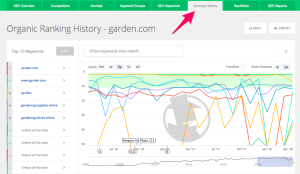At some point, many of the expats staying out of their motherland wish to come back and settle home with a business, especially if they have been staying in a location with greater currency value. Who do not like to have everything under their control and be their own boss! Ideas may be many but entrepreneurship is not a cup of coffee that you order and sip without a single effort of your own. If you are outside the country, the challenges are even more. Not only are you unfamiliar with the place but also with the people; and it is people that help the business to form.

So, what must you do if you want to build a business back home? Here’s a quickie checklist to get you started.
- Service/product determination
If you are sure about the kind of business you want to set up, please ignore the first step. For those, who has a dream but nothing specific, it is time to focus. You will be investing money, a lot of money from your pocket. So you must fix up your mind on the kind of product or service you want to associate yourself with. One of the common tricks used by many is to place yourself as a customer and ask yourself if you may have bought that particular product/service. Some of the other things to keep in mind while solving the product/service equation are:
- The suitability or the advantage of using that product/service 10 years down the line – (for example: while Xerox thrives huge in US now, it may not be so prominent 10 years down the line)
- The subsidiary sources of revenue from the product/service
- Cost per month vs. ROI
- Scope of innovation
- Possibility of Product-service systems
- Geo-targeting and region analysis
After the initial step, the next thing to focus is the market. You must know the market in and out, be familiar with their consumption pattern and have a well researched report on the demand for your product/service there. A well done market research is an absolute necessity, which will point out the size, relevancy and pattern of demand in the market. Competition analysis has to be carried out at the same. Ask yourself:
- The amount of effort and up-front investment to acquire a customer
- Lead generation tactics used in the market: assimilate a team at the location to help you give local information
- Any conflict in the region, like political hotchpotch
- Legal structuring
Legal Structuring of the business depend on a lot of factors. You have to take into concern:
- Capital investment and tax implications
- Longevity (Time and delivery)
- Control and liability
Basing your judgment on the above factors, you can choose from Sole proprietorship, Partnership, Corporation, S Corporation, LLC and Non-profit Corporation. While most small business owner prefer S Corporation for its tax benefit and a good 75 shareholder capacity, LLC is here to stay. Ralph Anderson, a business tax analyst quotes in the entrepreneur.com, “An LLC is a much better entity for tax purposes than any other entity”
- Business Planning and finance solutions
This is the most important part of setting up your business. A business plan will be a clear roadmap that will distinctly measure all factors and give a possible way for the coming 5 years to go. According to Forbes, a proper business plan must have:
- Aim and mission in simple terms that even “your mother could understand”
- Customer centric solution, stating the advantages and disadvantages
- Market dynamics and business model for potential growth
- “Sustainable competitive advantage”, including competitor analysis plus substitute service/products
- Sales and Marketing strategy
- Cash flow , funding and a “financial forecast” for the next 5 years – get as many angel investors involved
- Administrative structure –advisory committee and the rest of the crew
- Exit strategy in case you decide to sell your business
- Company registration
Before filling up the form for company registration, keep in hand these data:
- Type of business
- Unique business name, already registered at ROC
- Director identification number
- Digital signature certificate authorized by Ministry of Corporate Affairs
- Certificate of incorporations
- PAN number and Tax account number
Generally it takes more than 30 days to complete the registration process. For states in US, getting an EIN and registering with a state revenue agency are a must before company registration.
(169)








